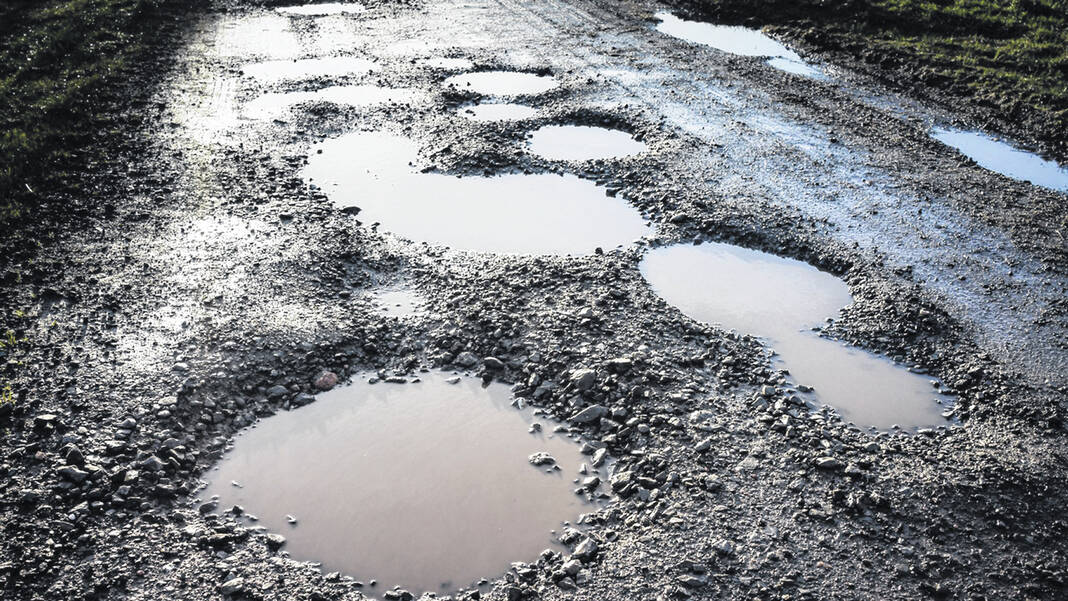
Geotextiles can help prevent potholes on gravel driveways.
Submitted photo

Are you tired of fixing potholes and washouts in your gravel driveway? Is your paver patio settling into the ground? Do you have a sagging, collapsing retaining wall? These problems can have one thing in common; they were installed without using any “geotextile” fabrics or “geogrids”. Geotextiles are high-strength fabrics used to restrict the flow of fine particles and contaminants while allowing air, water, and fertilizer into the soil. “Geogrids” are high-strength netting, used as reinforcement between layers of block or gravel.
An essential step when installing any sort of paved surface, or even a gravel driveway, is to first put down a layer of geotextile to keep the gravel layers from mixing with the soil below. Otherwise, the weight of vehicles will “pump” the underlying soil up through the gravel, allowing the gravel to be pushed underground. Eventually water will collect in the soft spots and tire ruts, causing potholes and washing out the tire tracks. No matter how much gravel is added later, the potholes and ruts will inevitably reappear.
The super-strong geotextile also spreads the weight of vehicles and other heavy objects, reducing the number of pounds per square inch in any one spot, making the roadway or patio much stronger. This further reduces potholes and ruts, making the paving or gravel surface last much longer, and supporting heavier loads.
In retaining wall construction, lining the footer trench with geotextile prevents settling by spreading the weight of the wall over a much larger area, and preventing the underlying soil from squeezing upward through the wall footer. This is a key step to making the wall last.
Geogrid has a different function. Roadways, patios, paver walks and retaining walls are supported by layers of compacted gravel. Sandwiching geogrid between the gravel layers prevents the gravel from flexing or shifting. Geogrid greatly increases the load bearing ability of any roadway or hardscape, by spreading the weight over a wider area. Geogrid embedded in the gravel makes the entire structure much stronger.
In wall construction, geogrid is sandwiched between the layers of block and extends back into the backfill behind the wall. This way the weight of the backfill locks the wall in place. The geogrid acts as an anchor, while the wall block acts as a “skin”. The combination of the wall block, geogrid, and backfill work together to form the wall structure.
A critical step in roadway or wall construction is to prevent water from accumulating under the gravel footer. Roadways need to be shaped so that they shed water, before adding geotextile and gravel. Wall footers should drain like a bathtub from their lowest point, so water doesn’t sit underneath the wall, softening the underlying soil and allowing the wall to settle. Runoff should be diverted away from the roadway or wall.
The combination of proper grading, compaction, geotextile underlayment and reinforcing geogrid act together to make your roadway or hardscape much stronger and long-lasting.
Steve Boehme is a landscape designer/installer specializing in outdoor living spaces. “Let’s Grow” is published weekly; column archives are online at www.goodseedfarm.com. For more information call GoodSeed Farm Landscapes at (937) 587-7021.

